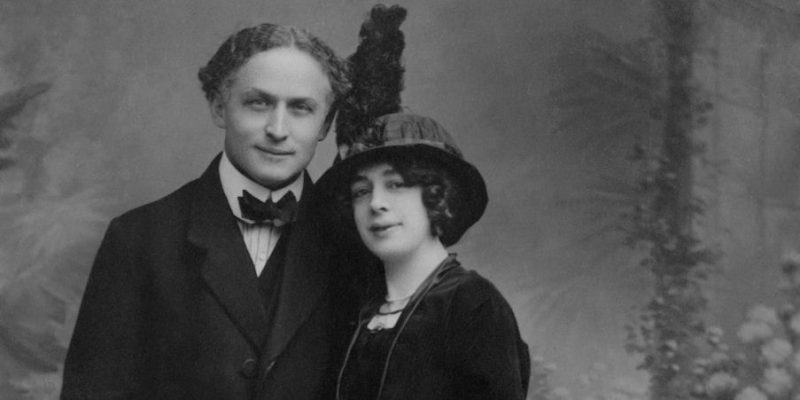We explain what spiritualism is and how it differs from spirituality. In addition, we tell you his story and what his beliefs are.

What is spiritualism?
The term “spiritualism” normally refers to a set of convictions, pseudoscientific practices and religious doctrines that share the belief in the immortal existence of the souls of the deceased, which can be contacted through rituals determined (usually with the presence of mediums or priests) and that can even manifest in the real world.
In simpler terms, spiritualism is the set of practices and doctrines that aim to overcome the barrier between the world of the living and the world of the dead, with the purpose of obtaining information, dispelling spells and possessions, or simply reuniting the people with a deceased relative.
There is no central entity that standardizes these types of practices, such as a church or formal organization. For this reason, under the name of “spiritism” one can find everything from European pseudosciences to religious traditions from Latin America and the Caribbean.
In general, spiritualism attributes supernatural knowledge, powers and abilities to the spirits of the deceased capable of decisively influencing the fate of the living. These spirits (recently deceased and old) may have selfish or evil intentions, or may provide solutions and advice, but they must be contacted appropriately and often offer some kind of favor or redress.
Contact with spirits is made through special sessions, under the guidance of people experienced in dealing with spirits, even capable of giving them their body possession, temporarily, so that they can speak through their vocal cords. The latter is the task of the so-called “mediums” (or their equivalents in different spiritualist religions).
For this reason, the field of spiritualism has been particularly prone to deception, fraud, and manipulation since its popularization in the modern West of the 19th century.
Origin and history of spiritualism

It is difficult to establish a universal point of origin for spiritualism, given that the belief in the immortal soul and existence after death has accompanied humanity from very early times. Specters, ghosts and trips to the underworld in search of a secret or in search of a lost loved one are very recurrent motifs in mythology and literature of Antiquity and they have equivalents in almost all known cultures.
In fact, In numerous cults and religions of Asian, African and American origin, spirits play an important role as guardians of their offspring, occasional advisors or source of danger and illness.
In the Santeria sessions of the Caribbean Yoruba religion, for example, it is common to invoke tutelary spirits, belonging to historical figures or souls from the popular imagination, to carry out tasks and grant favors, in exchange for drink, food and tobacco, for example. example.
However, spiritualism had a leading role in the West from the mid-19th century, when it emerged as a pseudoscience linked to the entertainment of the young industrial bourgeoisie.
Different founding events are attributed to it in France, England and the United States, such as the supernatural presences at the Fox farm in Hydesville, New York (1848), but the truth is that its great popularization was due to the publication in 1857 of The book of spirits by the French Hyppolite León Denizard Rivail, alias Allan Kardec (1804-1869), the first of a series of spiritualist publications, the result of his research on the subject.
The success of Kardec's works was such that there were soon spiritualist societies in numerous European countries and the United States, dedicated to contacting the deceased through different methods and procedures.
Despite the condemnations that these practices aroused in both the Catholic and Protestant Churches, in 1893 the National Spiritualist Association emerged in the United States and in much of the West the existence of spirits was presented as a “scientific” field of study. , which also investigated phenomena such as clairvoyance, telepathy and precognition.
However, By the beginning of the 20th century, numerous deceptions had already been demonstrated and confessed in the field of spiritualism. Teams of researchers collaborated with professional magicians and illusionists such as the famous Harry Houdini (1874-1926) to verify the fraudulent methods of most mediums and spiritualists.
This caused a severe discredit of the discipline, which quickly gave up the ground it had gained in almost the entire world, with the notable exception of France and Brazil, the two countries where spiritualism is most practiced today.
Principles and beliefs of spiritualism
Spiritualism does not have a homogeneous and universal body of precepts, nor a unified doctrine, so its beliefs and principles can vary significantly from one place to another and from one group of practitioners to another. Even so, spiritualism poses a series of general postulates, which have to do with the following:
- The world is inhabited by individual, eternal spirits endowed with their own intelligence and personality, who exist outside of known reality. These spirits cannot interact with the physical world except on rare occasions, or through possession of a living body.
- Human beings who die remain in the world as disembodied spirits but on a plane of greater or lesser enlightenment, depending on your personality characteristics and your life lived. Traumatic events of great psychic importance “anchor” spirits to a place, an object or a person.
- Communication between human beings and disembodied spirits can be carried out through very specific objects and procedures or through people prone to possession (such as mediums, priests or “matters”).
- Reincarnation exists so that discarnate spirits can be reborn as human beings once they have achieved a certain level of enlightenment or have overcome certain ethical, mystical or emotional obstacles.
- Spiritualism has no official doctrine nor is it a unique set of practices but adheres to a universal philosophy: anyone can establish contact with spirits in their own way, but by going to a specialist you can prevent the risks that this may bring.
- There are no angels, demons or other supernatural creatures but rather they are disembodied spirits that have “devolved” or have gone astray in their personal ailments, becoming ghosts and causes of evil. This may be different in spiritualist religions, which contemplate the existence of greater spirits or deities, such as orishas of the Yoruba religion.
Differences between spiritism and spirituality
In a very broad sense, Spirituality is the cultivation of the soul or spirit, that is, the attention to needs other than the biological and corporal which manifest in humans.
This concept can vary greatly, depending on the philosophical doctrine or point of view, and in religions such as Christianity, for example, they refer to the salvation of the spirit through the moral and ethical code proposed by their doctrine. Therefore, It is a much broader category than spiritualism since the latter reflects a specific point of view regarding matters of the spirit.
On the other hand, in Allan Kardec's most famous book, The book of spiritsthe terminological difference between “spiritualism” and “spiritualism” is explained from a strictly spiritualist point of view. According to Kardec, it is called spiritualism to the belief in a spiritual dimension of the human being, that is, to the belief that human beings have a dimension beyond the corporeal one. This would be the opposite of the materialism of atheistic doctrines.
For this reason, Kardec names his doctrine as spiritismand explains that one can be a spiritualist without being a spiritualist (for example, practicing a religion that proposes the salvation of souls), but that every spiritualist must necessarily be a spiritualist, since he believes in the existence of the spirit.
Types of spiritualism

The practice of spiritualism can occur according to numerous variants or points of view, since there is no universal set of procedures to “contact a spirit.” Thus, it is possible to distinguish the following spiritualist currents:
- “Scientific” spiritualism. Also called table spiritism or White Table, it is the variant most attached to what is proposed in Kardec's books, which is why it often considers itself “orthodox.” Its name comes from the fact that its practices involve sitting around a table covered by a white cloth, usually linen, usually with the medium at the head. They are usually group sessions in which the spirits manifest in different ways, depending on their level of intensity and their intentions.
- cord spiritualism. Heir to the shamanic and religious practices of different African, American and Asian peoples, this current receives its name from the circle that its practitioners make up, standing and holding hands, while singing songs and performing coordinated movements whose purpose is to induce trance. who will “receive” the spirit. In these sessions there are usually no guides or priests, and those present are considered to be much more physically and emotionally involved in the invocation process.
- Spiritism cross. Native to some regions of the Caribbean and the South American continent, it is a form of spiritualism closely linked to the Bantu traditions brought to America with the African slaves of the colonial era. In it, practices of both table and cord spiritualism are combined, and many others typical of the syncretism between popular Catholicism and the cult of the orishas of African religions.
- indigenous spiritualism. A current very present in Latin American and Caribbean peoples with greater indigenous heritage, especially in Puerto Rico and some regions of Venezuela. It is a current typical of rural environments, which claims the pantheon of elder spirits of the religion and the native traditions of different pre-Columbian peoples such as the Taínos and the Caribs.
Is spiritualism a pseudoscience?
In scientific and academic fields, in general, Spiritism is considered a superstition or pseudoscience, since the scientific method does not intervene in its study nor are the standards of validation and peer verification that are essential to science applied. This is what the Argentine epistemologist Mario Bunge (1919-2020) considered, for example, in his book scientific research (1969).
Spiritualism grew in popularity during the 1970s, hand in hand with the doctrines of the so-called “New Age”, along with various holistic and magical healing therapies, such as laying on of hands, crystal healing, among others. All of these doctrines are considered pseudosciences or superstitions.
Continue with: Magic
References
- “Spiritism” on Wikipedia.
- “Spiritism (Latin America)” on Wikipedia.
- “The curious origin of spiritualism” on ABC (Spain).
- “Spiritualism, a religion of the paranormal” in National Geographic.
- “Spiritism” at Encyclopedia.com.
- “Spiritualism (religion)” in The Encyclopaedia Britannica.





